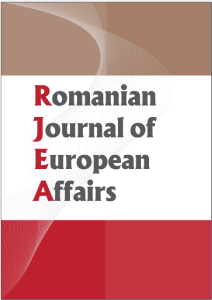The Impact of EU Enlargement on the Russian Federation
Alfred E. Kellermann
Abstract:
EU Enlargement is a consequence of the success story of the creation of the European Communities, as many applicant countries were attracted to the new legal order based on the rule of law, rather than to an order or disorder based on the rule of politics. As from May 1st 2004, the EU enlargement, unprecedented in its size, marks a historic milestone for the European Union and its Member States, and also for the whole continent. Given this new context, the EU has to find and define new cooperation partnerships with its neighbours. A major partner, not to be neglected in this new policy is by all means Russia. The first Summit between the enlarged EU and Russia held in Moscow on 21 May 2004 was the first high-level meeting of the 25 EU and Russia following the successful conclusion of negotiations between the European Commission and Russia on the extension of the EU-Russia Partnership and Cooperation Agreement (PCA) to the ten new EU Member States. The Summit calls for the reinforcement of EU-Russia relations via the creation of Four Common Spaces: a common economic space (with specific reference to environment and energy); a common space of Freedom, Security and Justice; a field of external security; as well as a space of research and education including culture. The next step will be to define shared priorities and concrete measures for each of the Four Common Spaces in a mutually agreed Action Plan.
Keywords: European Energy Charter
The Legal Obligations of a New EU Member State
Christen Boye Jacobsen
Keywords: Criteria, market economy
Reshaping the Romanian Consumers’s Behaviour Through European Union Regional and Social Cohesion Policy
Mihai Papuc
Abstract:
Shaping the East-European Consumers behaviour, in particular that of the Romanian consumers, in an economic and social environment guaranteed by the EU social cohesion policy, makes it necessary that the European institutions guarantee – through adequate action programs and judicial instruments – the harmonising of the community citizens’ interests and conditions regarding health, security and their right to be informed, granting them a fair position on the market.
The following paper aims to:
– realize a comparative study concerning the behaviour patterns of the EU consumers and of the East-European ones, especially those from Romania;
– emphasize the role of the EU regional and social cohesion policies (the Structural Funds and the Cohesion Fund) in eliminating interregional disparities;
– evaluate the prospects regarding the rise of the EU pre-accession instruments in the regional and social cohesion policy applied in Romania.
Becoming aware of the behaviour patterns of the local consumers and of those from the EU gives the national authorities and the Community ones the chance to integrate the protection of the Romanian consumers in the EU Program on consumers’ protection and information policy.
Keywords: Behaviour pattern, consumer group, social cohesion policy
Assessing the Economic Impacts of Incorporating Romanian’s Agricultural and Food Sectors into EU’s Customs Union: an Applied General Equilibrium Approach
Silviu S. Scrieciu
Abstract:
Joining the European Union club implies, among many other policy changes, full integration of Romania’s economy into EU’s customs union. This is expected to have significant implications for domestic farmers and food processors. The paper constructs a single-country Applied General Equilibrium (AGE) model to investigate the impact of tariff border adjustments on changes in relative prices, production and trade patterns associated with fifteen local agro-food activities. Moreover, the modelling work identifies those agro-food sectors that have the potential to benefit the most from EU enlargement in terms of output effects given that Romanian producers are capable of fully responding to the incentives provided with integration. These mainly include (bovine) live animals and meat products, sugar, and cereal grains. Agro-food trade with EU intensifies in particular for those commodities for which trade restrictions are still substantial prior to accession. However, the magnitude of changes is relatively small due to the weak integration of domestic agro-food sectors into international trade structures. The AGE model also predicts static welfare gains of 0.65 percent of GDP equivalent variation. These seem to be more associated with better access to EU markets and increased export prices, and less with the preferential unilateral elimination of tariffs or their adjustment to EU’s external levels. The model assumptions are highly theoretical and the model structure does not reflect with fidelity the workings of an economy in transition. Nonetheless, it does represent a solid base upon which further improvements could be added and structural transitional issues could be attached to more accurately predict potential outcomes.
Keywords: AGE modeling






